Your Branch And Origin Master Have Diverged
Version control systems play a crucial role in the development of software and collaborative projects, enabling multiple contributors to work on the same codebase without conflicts. One of the fundamental concepts in version control systems is the branch and origin master. The branch represents a separate line of development, while the origin master is the main branch that holds the stable and production-ready code. However, there can be instances where the branch and origin master diverge, causing challenges in the development process. In this article, we will delve into the causes, signs, implications, and strategies for managing branch and origin master divergence.
1. Understanding the concept of branch and origin master in version control systems:
Version control systems, such as Git, allow developers to create branches to work on different features or bug fixes independently. The branch is a copy of the codebase at a specific point, and changes made in the branch do not affect the origin master until they are merged. The origin master is the main branch that represents the stable and production-ready code.
2. Exploring the causes of branch and origin master divergence:
Branch and origin master divergence can occur due to various reasons, including poor version control practices, lack of communication among team members, improper handling of conflicts during merging, and frequent changes in the origin master that are not reflected in the branch.
3. Identifying the signs of branch and origin master divergence:
There are certain signs that indicate branch and origin master divergence, such as conflicts during merging, differences in code functionality between the branch and origin master, and outdated code in the branch compared to the origin master.
4. The implications of branch and origin master divergence on a development project:
Branch and origin master divergence can have significant implications on the development project. It can lead to confusion among team members, delays in merging and deployment, introduction of bugs and errors, and difficulty in tracking changes and their impact.
5. Strategies for preventing branch and origin master divergence:
To prevent branch and origin master divergence, it is essential to follow some best practices. These include creating a clear branching strategy, performing regular code reviews, ensuring communication and collaboration among team members, maintaining up-to-date documentation, and using automated testing and continuous integration tools.
6. Resolving branch and origin master divergence through merging:
Merging is one of the primary methods to resolve branch and origin master divergence. Developers can integrate the changes made in the branch into the origin master, ensuring that both branches are in sync. However, conflicts may arise during the merging process, which need to be resolved carefully to avoid introducing errors or losing essential code changes.
7. Employing rebasing techniques to reconcile branch and origin master divergence:
Rebasing is another technique that can be used to reconcile branch and origin master divergence. It involves moving the branch to a new base commit, incorporating the changes made in the origin master to the branch. This technique helps to maintain a linear history and minimize conflicts during merging.
8. Utilizing cherry-picking to address specific changes between branch and origin master:
Cherry-picking is a selective merging technique that allows developers to choose specific changes from one branch and apply them to another. It can be used to address specific changes between the branch and origin master, ensuring that only relevant modifications are merged.
9. The importance of communication and collaboration in avoiding branch and origin master divergence:
Effective communication and collaboration among team members are crucial to avoid branch and origin master divergence. Regular updates, code reviews, and discussions help in keeping everyone informed about the changes and the impact they may have on the branch and origin master.
FAQs:
Q1: What does “Your branch and origin master have diverged” mean?
A1: “Your branch and origin master have diverged” means that the branch and origin master have deviated from each other due to the introduction of different changes. It indicates that the branch and origin master are no longer in sync and need reconciliation.
Q2: How can I discard my branch if it has diverged from the origin master?
A2: To discard your branch if it has diverged from the origin master, you can simply switch to the origin master branch and delete the branch that has diverged. However, it is essential to ensure that you have backed up any relevant changes or modifications before discarding the branch.
Q3: What does “Your branch is up to date with ‘origin/master'” mean?
A3: “Your branch is up to date with ‘origin/master'” means that the branch you are working on is at the same commit as the origin master. It indicates that the branch and origin master are in sync and do not have any divergence.
In conclusion, branch and origin master divergence can pose significant challenges in the development process. Understanding the causes, signs, implications, and strategies for managing branch and origin master divergence is essential for successful version control. By following best practices, employing merging, rebasing, and cherry-picking techniques, and promoting communication and collaboration among team members, developers can effectively manage branch and origin master divergence, ensuring a smooth and efficient development workflow.
Your Branch And ‘Origin Master’ Have Diverged In Git
Keywords searched by users: your branch and origin master have diverged Your branch have diverged discard, Your branch is up to date with ‘origin/master
Categories: Top 39 Your Branch And Origin Master Have Diverged
See more here: nhanvietluanvan.com
Your Branch Have Diverged Discard
English is a language that has evolved over centuries, branching out and transforming into various dialects and versions across different regions. This diversification has resulted in differences in vocabulary, pronunciation, grammar, and even cultural references. In this article, we will delve into the concept of diverging branches within the English language and focus specifically on the notion of discarding certain linguistic elements.
What does it mean for a branch of English to diverge?
When a branch of English diverges, it means that it has developed distinct characteristics that set it apart from the standard or more widely spoken versions of the language. These divergences may involve changes in vocabulary, syntax, or pronunciation. Divergence can occur due to geographical isolation, historical factors, or even the influence of other languages in a specific region.
Discarding in the context of language refers to intentionally eliminating certain linguistic elements from usage. It can involve the removal of old words or expressions that have fallen out of favor, dismissing peculiar grammatical structures, or eschewing archaic pronunciations. Discarding helps streamline language, making it more efficient and relevant for modern communication. However, it also risks erasing traces of cultural heritage and linguistic diversity.
The case of discarded vocabulary:
One notable aspect of divergence in English branches is the presence of unique vocabulary sets. These words, often considered obsolete or nonstandard in standard English, are preserved and actively used within specific communities or regions. For example, Appalachian English in the United States might preserve archaic words like “reckon” (meaning “to think”) or “kinfolks” (meaning “relatives”).
In some cases, certain words or expressions are discarded due to social or political concerns. For instance, the use of racially insensitive terms has been abandoned over time to promote inclusivity and respect. Additionally, with the advent of technology, new terms have been coined while older ones have faded away, demonstrating how discarding can adapt language to fit modern needs.
The abandoned grammar pathways:
Discarding is not limited to vocabulary; grammatical structures can also experience abandonment. Unique syntactic features found in dialects such as African American Vernacular English (AAVE) have often been stigmatized and discarded in favor of more standardized forms. However, it is important to establish that such discarding can contribute to cultural marginalization and linguistic inequality.
Nevertheless, some linguistic features may be discarded because they are considered dated or unnecessary. For example, older verb conjugations (e.g., “thou shalt” instead of “you shall”) have become obsolete in almost all English branches. Streamlining grammar and syntax helps facilitate comprehension and make communication more efficient, albeit at the cost of linguistic diversity.
Understanding regional pronunciation shifts:
Pronunciation is another linguistic element that can diverge significantly across branches of English. In some cases, entire phonological systems may be abandoned or reshaped. For instance, the pronunciation of “r” sounds is notably different in accents such as the Cockney or Bostonian. Similarly, the loss or alteration of vowel sounds in certain accents or dialects contributes to the overall divergence of English branches.
These regional pronunciation shifts often result from historical influences, assimilation of sounds from other languages, or natural linguistic evolution. Although some accents and pronunciation patterns may be considered non-standard in official contexts, they are integral to the rich tapestry of the English language.
FAQs:
1. Does discarding linguistic elements weaken a branch of English?
While discarding can streamline language and make it more efficient, it may also lead to the erasure of cultural and linguistic diversity within a particular branch. It is essential to strike a balance between discarding unnecessary elements and preserving the unique aspects that reflect a community’s identity.
2. Are the divergent branches of English mutually intelligible?
In some cases, branches of English can still be mutually intelligible, albeit with some effort. However, in extreme cases of divergence, comprehension may be significantly impaired. This is particularly true when encountering accents, dialects, or vocabulary unfamiliar to the listener.
3. Is divergence solely due to regional factors?
While regional factors play a significant role in language divergence, other factors such as historical influences, socioeconomic factors, and migration patterns can also contribute to the development of distinct branches of English.
4. Can divergent branches of English influence each other?
Yes, divergent branches of English can influence each other. Interactions between speakers of different branches, globalization, and media exposure have facilitated the exchange of linguistic elements, leading to the adoption or transformation of certain features across branches.
5. Should discarded linguistic elements be revived?
The revival of discarded linguistic elements is a complex matter. While it is valuable to preserve cultural heritage and linguistic diversity, reviving outdated elements solely for the sake of preservation may hinder effective communication. Striking a balance between preservation and functionality is crucial.
In conclusion, the divergent branches of English exhibit various instances of discard, be it in the form of vocabulary, grammar, or pronunciation. While discarding can contribute to linguistic efficiency, it also carries the risk of erasing cultural uniqueness. By understanding the reasons behind these linguistic shifts, we can appreciate the rich tapestry of the English language and foster a balanced approach to language evolution.
Your Branch Is Up To Date With ‘Origin/Master
If you have been working with version control systems like Git, you may have come across the message “Your branch is up to date with ‘origin/master'”. While this message might make perfect sense to seasoned developers, it can be quite confusing for beginners. In this article, we will dive deeper into this message, understand its significance, and address some frequently asked questions (FAQs) related to it.
Understanding Git Branches and the ‘origin/master’ Branch
Git is a distributed version control system that allows multiple developers to work on a project simultaneously. Each developer can have their own branch to work on different features or bug fixes independently. Git also provides a mechanism to merge these branches back into a mainline branch, often called ‘master’, to incorporate the changes from different developers.
The term ‘origin’ is a shorthand used to refer to the remote repository from which the local repository was cloned. When you clone an existing repository, Git creates a remote called ‘origin’ that points to the original repository from where it was cloned. So, ‘origin/master’ refers to the ‘master’ branch in the remote repository.
‘Your Branch is Up to Date with ‘origin/master’ – What Does it Mean?
Now that we have some background, let’s understand the message “Your branch is up to date with ‘origin/master'”. This message implies that your local branch is at the same commit as the ‘origin/master’ branch, indicating that you have incorporated all the latest changes made by other developers. Essentially, it assures you that your branch is aligned with the latest version available in the remote repository.
Why is it Important?
Knowing that your branch is up to date with ‘origin/master’ is vital for collaborative software development. It ensures that you have integrated all the recent changes made by other team members, eliminating the possibility of conflicts when merging your branch back into the mainline branch. It also keeps your local repository in sync with the remote repository, facilitating a seamless workflow.
FAQs about ‘Your Branch is Up to Date with ‘origin/master”
Q1. What should I do if my branch is not up to date?
A1. If your branch is not up to date with ‘origin/master’, it means that there are some changes in the remote repository that you haven’t incorporated yet. To update your branch, you can use the command ‘git pull origin master’, which fetches the latest changes from the remote repository and merges them into your branch.
Q2. Can I have multiple branches that are up to date with ‘origin/master’?
A2. Yes, it is possible to have multiple branches that are up to date with ‘origin/master’. Each branch can be in sync with ‘origin/master’ independently, indicating that all of them have the latest changes from the remote repository.
Q3. What if I don’t see the message “Your branch is up to date with ‘origin/master'”?
A3. If you don’t see this message, it could mean one of two things: either your branch is not up to date with ‘origin/master’, or you are not currently on the branch that is being tracked. To ensure you are on the correct branch, you can use the command ‘git branch’ to show all the branches in your local repository and ‘git status’ to see the currently checked out branch.
Q4. Is it necessary to be up to date with ‘origin/master’ before merging my branch?
A4. While it is recommended to have your branch up to date with ‘origin/master’ before merging, it is not always mandatory. If you are confident that your changes won’t conflict with others and you don’t need the latest changes made by other developers, you can proceed with the merge. However, merging with an outdated branch could lead to conflicts that need to be resolved manually.
Q5. Are there any alternative messages that indicate my branch is up to date with ‘origin/master’?
A5. Yes, besides the exact message “Your branch is up to date with ‘origin/master'”, you might also encounter variations like “Everything up to date”, “Already up to date”, or others, depending on the Git client or IDE you are using. Each of these messages essentially conveys the same information – that your branch is aligned with the latest commit in ‘origin/master’.
In conclusion, understanding the message “Your branch is up to date with ‘origin/master'” is crucial for effective collaboration in software development using Git. It assures you that your branch incorporates the latest changes from other team members and eliminates conflicts when merging. By addressing common FAQs, we hope to have provided a comprehensive understanding of this topic. So, next time you encounter this message, you can confidently continue with your development workflow.
Images related to the topic your branch and origin master have diverged
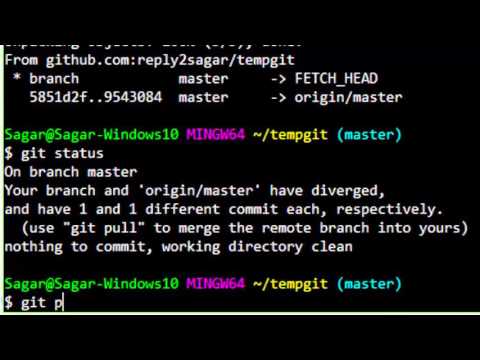
Found 5 images related to your branch and origin master have diverged theme

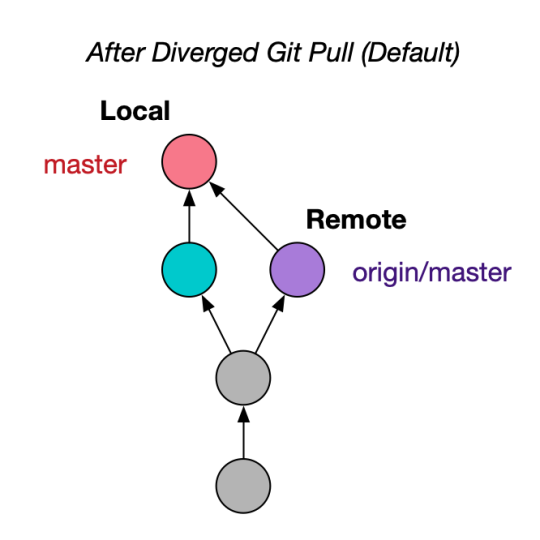
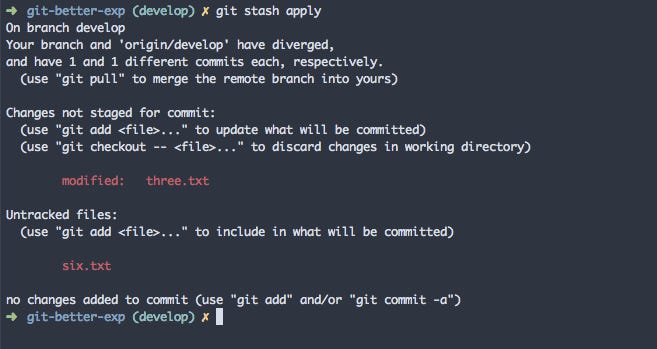



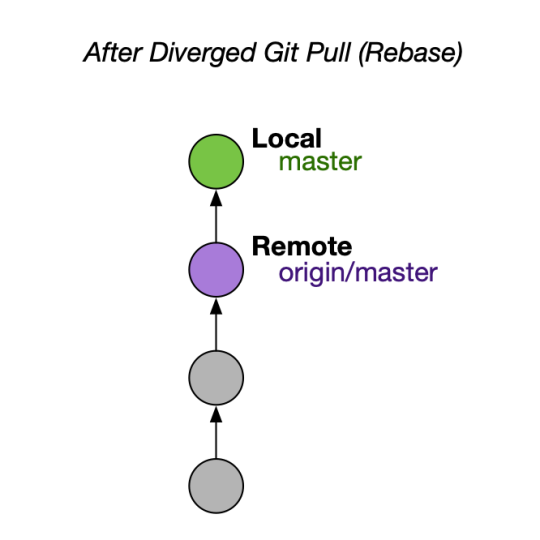
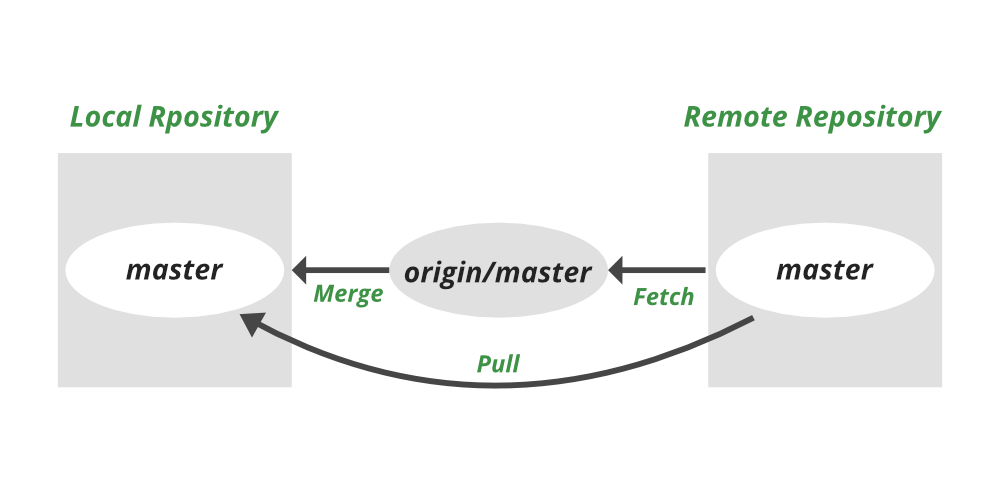


Article link: your branch and origin master have diverged.
Learn more about the topic your branch and origin master have diverged.
- git – master branch and ‘origin/master’ have diverged, how to …
- What to do when git branch has diverged? – PoAn (Baron) Chen
- Your branch and ‘origin/master’ have diverged. How to fix it?
- Your branch and ‘origin/master’ have diverged? #22704 – GitHub
- Git-Master Branch “DIVERGE” – LinkedIn
- Your branch and ‘origin/development’ have diverged…
- Git – git-pull Documentation
See more: https://nhanvietluanvan.com/luat-hoc